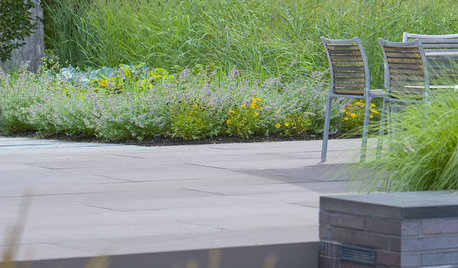Too Much Straw on Grass Seed, and Subsurface Irrigation
reesnick
12 years ago
Related Stories

GARDENING GUIDES5 Great Grasses for a New Lawn
Learn about maintenance, wear tolerance, ideal climate and more for these top turf choices to pick the right one for you
Full Story
FLOWERS AND PLANTSPanicum Virgatum, a Prairie Beauty Many Gardeners Can Enjoy
Switchgrass adds color through the year and is a natural ‘seed feeder’ for birds
Full Story
EARTH DAYGrow a Beautiful Garden With Ecofriendly Greywater
Reducing home water waste means lower bills and a healthier planet. Here's how to set up a greywater home irrigation system that can help
Full Story
LANDSCAPE DESIGN15 Great Ideas for a Lawn-Free Yard
End the turf war for good with hardscaping, native grasses and ground covers that save water and are easier to maintain
Full Story
GROUND COVERSGround Force: 10 Top Ground Covers for Your Garden
Protect your soil from weeds and drought this summer with a living mulch of ground covers
Full Story
EARTH DAYThe Case for Losing the Traditional Lawn
Work less, help the environment and foster connections by just saying no to typical turf
Full Story
EDIBLE GARDENSHow to Grow Your Own Sweet Summer Crops
This guide will help any gardener get started on growing the freshest warm-season veggies and berries for summer
Full Story
FARM YOUR YARDAdvice on Canyon Farming From L.A.'s Vegetable Whisperer
See how a screened garden house and raised beds help an edible garden in a Los Angeles canyon thrive
Full Story
GREAT HOME PROJECTSHow to Replace Your Lawn With a Garden
New project for a new year: Lose the turfgrass for energy savings, wildlife friendliness and lower maintenance
Full Story
FRONT YARD IDEASBefore and After: Front Lawn to Prairie Garden
How they did it: Homeowners create a plan, stick to it and keep the neighbors (and wildlife) in mind
Full Story







reesnickOriginal Author
tiemco
Related Professionals
Brentwood Landscape Architects & Landscape Designers · Prairie Ridge Landscape Architects & Landscape Designers · Brownsville Landscape Contractors · Gainesville Landscape Contractors · Mastic Beach Landscape Contractors · North Potomac Landscape Contractors · Pleasant Hill Landscape Contractors · Soddy Daisy Landscape Contractors · Sun City Center Landscape Contractors · Washington Landscape Contractors · West Palm Beach Landscape Contractors · Woodburn Landscape Contractors · Crowley Landscape Contractors · Bakersfield Swimming Pool Builders · Montclair Swimming Pool BuildersreesnickOriginal Author
tiemco
reesnickOriginal Author
tiemco
reesnickOriginal Author
tiemco